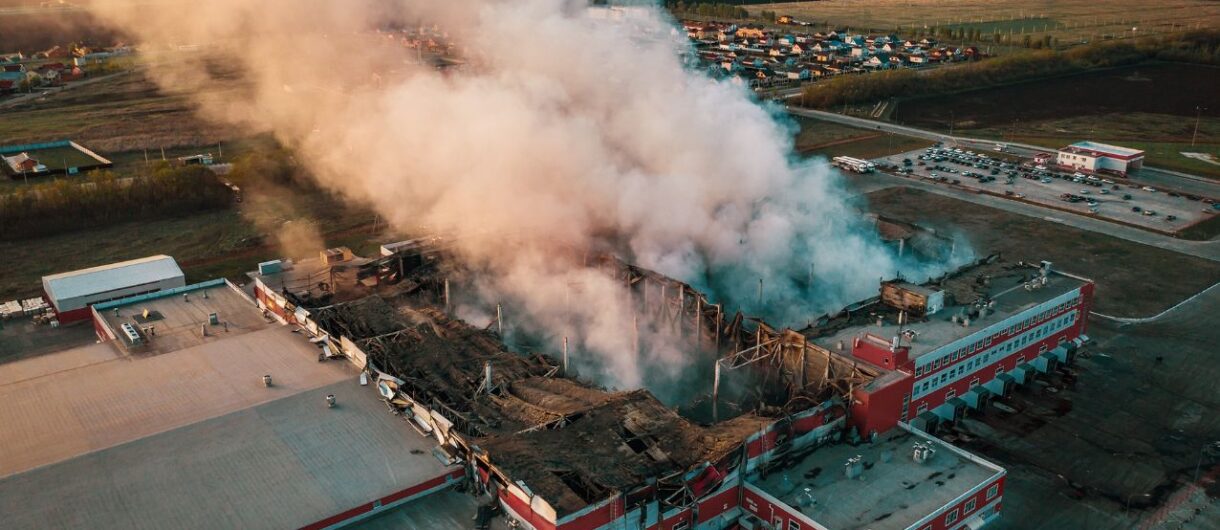
What is a SHEV system and how does it work?
Temperature control and smoke evacuation systems (SCTEH) are protection systems against risks that may be caused by elements like smoke during a fire.
Smoke evacuation is key in preventing personal injuries during a fire. That is why, in this article, we delve into the reasons why the application of these systems is vitally important, in addition to understanding their functions and the objectives they must fulfill.
What will you learn in this article?
- Smoke, risk factor in a fire
- Functions of a smoke control and evacuation system
- Objectives of an SCTEH
⇢ Smoke, risk factor in a fire
Smoke is one of the most dangerous elements in a fire and is the cause of 80% of fatalities when a building catches fire. During a fire, smoke and hot gases are produced and can spread easily, invading not only the areas on fire but also the evacuation routes.
The chances of suffocation by smoke inhalation for those inside the building, combined with the higher probability of structural damage due to the high temperatures, make smoke a very dangerous element.
Furthermore, because it obstructs visibility and makes it harder for firefighters to approach the fire, it becomes much more difficult to extinguish the flames.
For all these reasons, smoke, and its content in harmful gases, acids, and other substances, is one of the biggest risk elements in a fire. One of the solutions, in addition to SCTEH, for controlling smoke in a fire is the use of smoke curtains that prevent the spread of gases produced by the fire.
⇢ Functions of a smoke control and evacuation system
SCTEH, whose requirements are regulated by the UNE 23585 standard, are Temperature Control and Smoke Evacuation Systems. A system whose mechanism is responsible for providing escape routes for the smoke that forms during a fire, to ensure that occupants can safely use evacuation routes.
On the other hand, they serve the function of facilitating the extinction of the fire in different ways.
Firstly, by preventing the temperature of the building from rising in such a way that it increases the risk of the fire spreading to other areas or weakening the structure.
They also play a fundamental role in the work of firefighters, as they improve the visibility of the operators, allowing them to act with greater precision and less risk.
In addition to their explicit use in the event of a fire, SCTEH also serve the function of ventilating the building, naturally illuminating spaces, and improving the sustainability of the construction.
⇢ Objectives of an SCTEH
From all that we have seen, we can say that the objectives of these systems are as follows:
- Smoke evacuation.
- Evacuation of high temperatures to reduce their effects on the structure.
- Containment of smoke to prevent it from spreading to other areas.
- Reduction of material and personal damage.
- Facilitate the evacuation of occupants.
- Facilitate rescue and firefighting operations.
- Reduce the chances of a flashover, or sudden generalized combustion.
As we have analyzed, the role of SCTEH is critical to preventing the fire from spreading and causing irreversible damage to people and the building. Do you want us to help protect your building from fire? Talk to us.
Bibliography
UNE. (n.d.). Norma N0059303. Unión Española de Normalización. Retrieved September 25, 2025, from https://www.une.org/encuentra-tu-norma/busca-tu-norma/norma?c=N0059303
Tecnitex. (2025, September 25). Smoke Inhalation: Effects on Health and Solutions. Tecnitex. Retrieved September 25, 2025, from https://tecnitexfire.com/blog/inhalacion-humo-efectos-salud-y-soluciones/